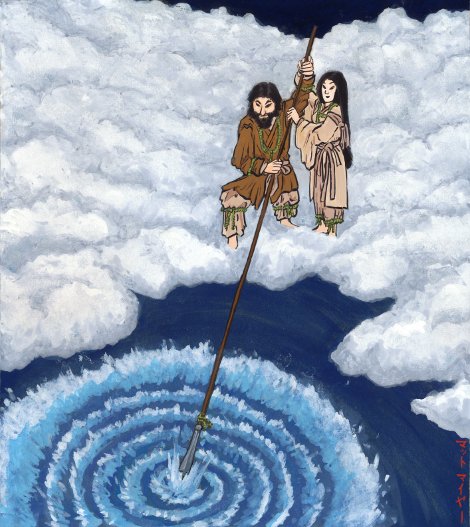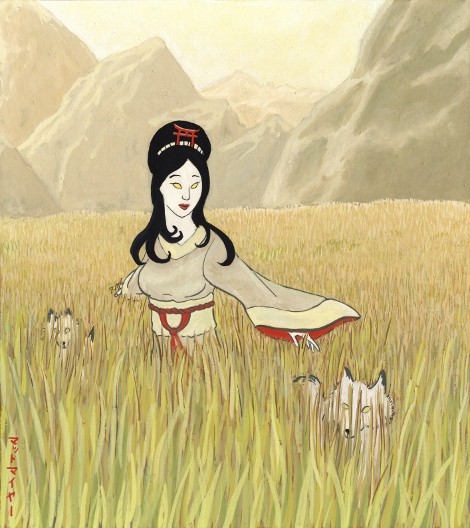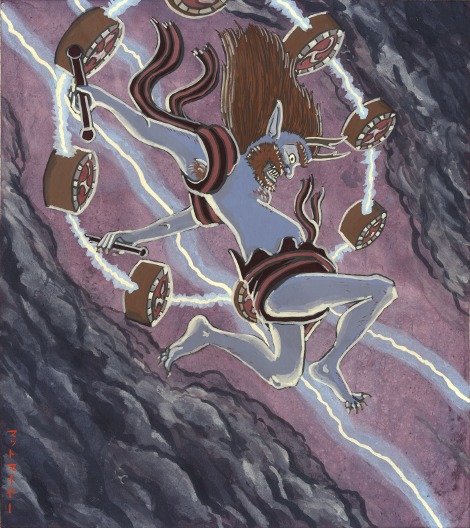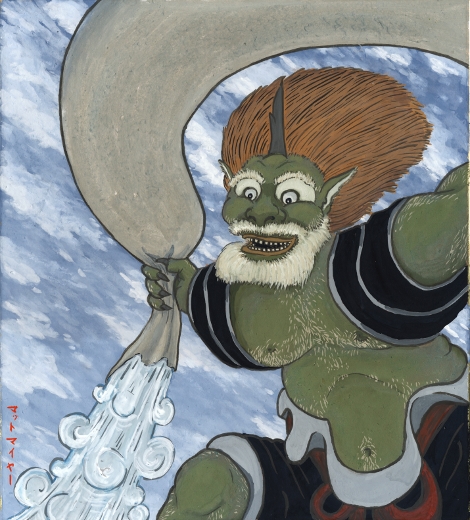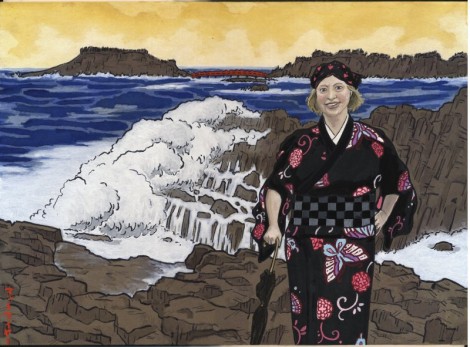Yesterday we heard the story of Izanagi and Izanami creating the world, the islands of Japan, and many of the gods and goddesses. After giving birth to the god of fire, poor Izanami was too badly burnt to live, and she died in her husband’s arms. Izanagi was so angry that he slaughtered the infant god of fire, cutting him up into many new gods. But his grief didn’t end there.
Izanagi was so upset that he determined to travel to the underworld, Yomi, to retrieve his wife. He searched and quickly found her (presumably there weren’t too many dead at this point in history). At this point it was too dark to see her, but he called out to her to come back to the land of the living. Izanami spat at him that he came too late, as she had already eaten the food of the underworld and could no longer return to life.
Izanagi refused to accept this, so he waited until Izanami fell asleep, and snuck up on her to carry her back to the land of the living. When the light of his torch fell upon her face, he was horrified, as she was in a terrible state of decompose, with maggots and worms crawling through her once beautiful face. Izanagi shrieked (wouldn’t you?) and fled, waking up Izanami in doing so. Izanami was so indignant that she sent eight hell-hags after her husband, instructing them to bring him back to live with her forever.
Izanagi fled the underworld and quickly threw a huge boulder over the entrance, keeping the demons and hellbeasts — and his now-hellish wife — trapped in Yomi. Furious, Izanami shrieked out at him that if he left her, she would destroy 1000 lives every day for the rest of eternity. Izanagi replied that if she did that, he would give life to 1500 new lives every day.
Izanagi left his wife forever that day, and went to perform a cleansing ritual to purify himself of having visiting Yomi (and presumably to wash off any bits of his wife that were stuck to him after that traumatic venture). In cleansing himself, the water that fell out of his left eye became the sun goddess, Amaterasu. The water that fell from his right eye became the moon god Tsukuyomi (we heard about him in Inari’s story too). And whatever it was that came out of his nose (yuck!) became Susano’o, the evil storm god.
As for Izanami, she became the queen of the underworld.
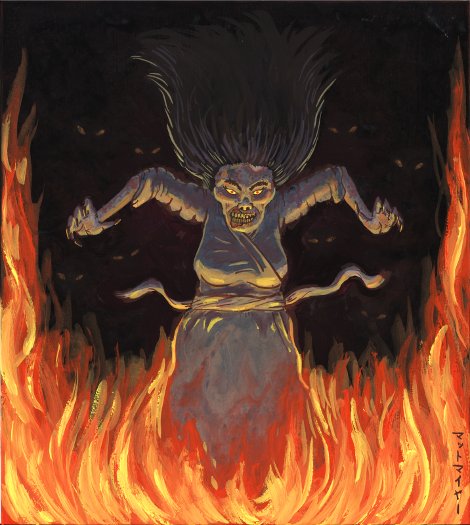
Izanami
The Japanese version of hell, or Yomi, isn’t really like the Christian concept of hell. Originally, it was quite similar to the Greek underworld, Hades. After Buddhism came to Japan, Yomi was incorporated into Buddhist cosmology and became one of the many hells one can go to if they’ve been a bad person…
Extra credit to any of you who caught the similarities between the story of Izanagi and Izanami and the story of Orpheus and Eurydice. Double extra credit to any of you who caught the similarities to the Mayan myth of Itzamna and Ix Chel, the Indian myth of Savitri and Satyavan, or the Sumerian myth of Inanna’s decent into the underworld. Myths are fun!
Anyway, as usual, head on over to Etsy if you’d like to support me by buying a print!
伊弉諾(いざなぎ)は伊弉冉(いざなみ)が死んだ後、大変悲しくて寂しくて、伊弉冉を連れて帰るために黄泉の国に行きました。
伊弉諾は黄泉の国で探し回って、ようやく伊弉冉を見つけました。でも伊弉冉の姿はまったく違っていました。綺麗な顔は腐って、顔に開いた穴からは虫がウニャウニャしていました。伊弉諾はびっくりして逃げました。伊弉冉は怒って、伊弉諾を追いかけました。
伊弉諾は黄泉の国の出口に来た時に、大きい岩を出口に置きました。そのため、伊弉冉は出ることができなくなりました。怒った伊弉冉は「私から離れたら、毎日1000人を殺します!」と叫びました。伊弉諾は「そうしたら、私は毎日1500人の人間をつくります!」と言いました。
その後、伊弉冉は黄泉の国の女王になりました。
ギリシア神話には、オルペウスとエウリュディケーと言う物語があります。これは、伊弉諾と伊弉冉の物語ととてもにいています。オルペウスはヘーデース(ギリシアの黄泉)に言って、エウリュディケーを連れて帰りたかったのですが、だめでした。世界でたくさんの国にはこの話とにいている神話があります。どうしてかな?不思議ですね。

